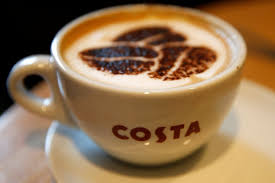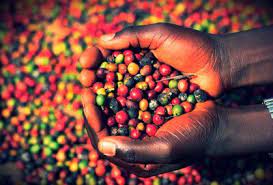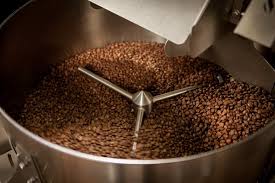A Short History of Coffee

The History of Coffee - A Short Story
Coffee is just about everywhere nowadays and with good reason, it’s one of the best drinks on the planet! But where did coffee come from and how did humans discover what is currently the third most consumed drink in the world?
What is Coffee? What is Coffee made of?
Coffee itself are seeds within the coffee comes in the form of little green cherry berries on coffee trees that turn to red berries when ripe. This is the point when the coffee cherries beans are harvested and the coffee seeds, that we call coffee beans are processed in many different ways that leads to the many flavours and characteristics we enjoy. then de-pulped within 24 hours to prevent them producing a rotten overly fruity flavour. De-pulping is when the outer flesh of the beans are removed from the seeds.
All coffee beans go through some sort of fermentation during this processing stage. The most ancient of these processes is the ‘dry process’ also called ‘natural process’. In more modern times farmers have innovated hundreds of different flavour enhancing processing methods. Now it’s common to hear of processes such as ‘fully washed, or ‘black honey’. All of these processes impact the flavour but it’s important to remember that there are no standard protocols across the coffee industry so the processing style from every region adds to the broad variety and complex history of this flavourful seed. The seeds are then fermented to intensify the flavour, remaining fermenting until the sugars have dissolved at which point the beans are washed to ensure that the fermentation process has finished.
The last stage of the processing is the dry of the coffee beans to get them ready to ship to roasteries around the globe. This drying process can take a mater of days or weeks depending of the farmers processing style and flavour objectives. seeds are then dried either by the sun or mechanical equipment, this process can take between 3 - 5 days and sometimes even up to 2 weeks.
Roasting the coffee is the art of presenting the flavours of the bean. Some of these flavours come from the bean itself, others from the farmers processing style, and others still come from the type of roasting profile the roaster has used. The coffee seeds are then roasted but the extent of this greatly varies:
At the earliest known beginnings of coffee drinking, roasting was done on a skillet over a wood fire. You’ll still find coffee roasted this way in Ethiopia and other ancient coffee drinking cultures. Over time however, coffee roasting technology developed with industrialisation and the demand for more and more coffee grew. All through the history of coffee drinking the style of roasting and the consumers preferences have been in a constant battle of the old verses the new. This tension continues today as innovations of how to manipulate the roasting flavour profile have become very refined and roasting coffee is no longer just a means of turning a hard green seed into a grindable bean to produce an enjoyed bitter beverage. Styles of roasting now can have a dramatic impact on the method of brewing and the end result of the flavour.
Light Roast - This style of roasting tends to emphasise the bright fruity and floral aspects of a coffee. These roasts are suited for pour-over brewing methods and best enjoyed black.
Medium Roast - This style of roasting brings out the balance in a broad range of flavours. If the coffee is good then this roasting style will bring out all the complexity the bean has to offer. It’s possible to brew a medium roast through an espresso machine but it’s best enjoyed much like a light roast; without milk or sugar just the pour taste of a great bean. is the first stage of roasting and produces a very light cup of coffee. (Cinnamon brown)
Full City Roast - This is a darker roast that is ideal for espresso extraction. For those who like a bold and fuller cup that mixes well with milk or cream, this is the style of roast most suited to you. A much more complex and flavourful level of coffee roasting. (Chestnut brown)
Vienna Roast - In roasting terms, this style of roast emphasises the roast flavours versus the unique flavours of the specific coffee bean. This roast style is designed to punch through other strong flavours such as creams, syrups and liqueurs. At this level of roasting the coffee beans are covered in their own oils making a very smoky smell and very rich and smooth to drink. (Dark Chocolate Brown)
French Roast - This is the darkest style of roast. When roasted well the coffee will have At the deepest roasting stage there is a thick amount of coffee oils coating the beans, creating an intense aroma and bitter-sweet it's the international favourite due to its velvety flavour. (Mahogany brown)

The Birth of Coffee
So now we know what coffee is and we’ve covered a little of roasting styles how it's made, the question is how did we discover it in the first place?
Coffee leaves and berries have been consumed for far longer than the times when these stories are based by the Oromo who used the coffee plant for energy for thousands of years.
Well the birth of drinkable coffee takes us back to ancient times, to two possible stories of coffees origin:
Ethiopia - Africa
Legend has it that around 850 AD in the region of Kaffa a goat herder called Kaldi noticed one of his goats eating some small red berries from a tree and at first was likely worried worries these were poisonous but then the goat started moving around with a very noticeable rise in energy.
Intrigued by this, Kaldi tried some of the strange berries for himself and found that although not particularly flavourful, disgustingly bitter he also had a sudden burst of energy and became highly active.
After confirming his suspicion, he wished to share these strange effects and so he collected some of the berries in excitement and took them to his village to show others what the local monastery and showed the head monk what he had discovered. Legend has it that one of his fellow experimenters However, the monk was untrusting of the strange power of these little red berries and threw them into a nearby fire.
It was not long after he threw the berries that the aroma that we love and cherish today filled the room and captivated the enchanted onlookers monks' interest. Once the fire died down, they retrieved the now roasted coffee seeds and ground them up to a fine dust and mixed this dust with water, creating what just might have been the very first cup of coffee.
Yemen -
The second possible origin story starts in ancient Yemen with a man called Sheikh Omar who was said to have mystical healing powers. For reasons unknown the Sheikh was banished from his community never to return.
He resided in a cave he found in the desert and did what he could to survive. On one of his daily searches for food he found a tree with little red berries and gathered as much as he could find but on tasting he found that these berries had an overpoweringly bitter taste to them and he pondered how he could get the benefits of these berries without having to endure this unpleasant taste.
He decided to roast the berries over his campfire and then grind up the roasted seeds that remained. He then boiled water and mixed in his ground berry seeds. He was shocked to find that when he tried his new invention it was particularly delicious and gave him a boost of energy that sustained him for days.
When his community discovered his concoction he was invited back with open arms.
There is no true way to know if either of these stories are legitimate true but what we do know for sure is that coffee's origins do in fact lay in either Yemen or Ethiopia. This is because the coffee tree itself is native to Ethiopia but the first recorded evidence of coffee tree cultivation bean roasting is in Yemen.

The Start & Expansion of the Coffee Empire
Coffee trees are originally from Ethiopia (or more presicly, Coffea Arabica which is the most common and favoured coffee tree species used to grow our coffee today) but are believed to have travelled to Yemen through the traffic of the slave trade and most likely the hungry enslaved people taking them as food and then throwing away or depositing the seeds in Yemen.
Yemen is actually the first-place humans cultivated coffee trees and according to legend the the Yemeni people Arabs refused to allow the export of fertile seeds to maintain trading dominance and secrets behind this precious drink. ofso that they could hold onto their culture and prevent others from cultivating or discovering coffee's secret kick.
The joy of drinking coffee spread all across the Arab world and iIn around 1550 the world's first known coffee houses opened in Constantinople, today's Istanbul in Turkey. In the 1600s coffee and coffee houses quickly spread to Europe and England. During this time the fame of this magical tree was too alluring to be ignored and several stolen saplings were successfully cultivated. The Dutch began growing coffee in Sri Lanka (then known as Ceylon) from the end of the 1660s and on into the 1700s. The French also cultivated coffee on the island of Bourbon now known as the Reunion Islands. leading to the first coffee plantations to be opened in the Netherlands in Sri Lanka.
At this time Europe was consumed by alcohol, especially cities and towns as drinking the local river water would very likely cause diseases like cholera due to almost all our human waste ending up in these very rivers.
Because of this the norm would be to wake up in the morning and have a beer for breakfast, then a beer on your break, then a beer for your lunch and so on and so on. As you can imagine this was disastrous and there was a large amount of disorder, but the introduction of coffee replaced the need for alcohol as the only safe alternative to water.
In the 1700s coffee became popular amongst the upper class and wealthy Europeans and soon after the middle classes followed suit. The reason why coffee became more common than tea at this time was because it was easier to make and cheaper to produce. It also helped that coffee was seen as being healthier than tea which was often made using herbs such as wormwood and other harmful ingredients.
Also during this period, the cultivation of coffee further spread was taken to the Caribbean by the French, to Brazil by the Portuguese and to Indonesia by the Dutch. “The New World” (America) by the British.
By 1820 coffee consumption grew exponentially throughout Europe and America. At this point the world's largest producer of coffee beans was were Brazil who produced about 80% of the world's supply.
During World War I many European countries banned imports of Brazilian coffee beans into their country causing prices to rise dramatically. As a result of this ban the United States took control of the market and began producing its own coffee beans. By 1920 the US alone produced enough coffee to meet the demand of the entire globe.
Today the majority of the world's production comes from South America and Latin American. Countries like Brazil, countries including Colombia, Mexico, Guatemala, Honduras, El Salvador, Thailand, Nicaragua, Costa Rica, Panama, Ecuador, Peru, Bolivia, Chile, Paraguay, Uruguay and Argentina. Africa is also a massive producer with Ethiopia being the largest in the continent. Many Asian countries like Vietnam, Thailand, India and Laos are also big producers and consumers of coffee. These countries and others close to the equator are known collectively as the coffee bean belt.
How Coffee Got Its Name
As previously mentioned, the first place of coffee's origin lies in a region of Ethiopia in Africa which was at the time known as 'Kaffa'. Presumably this is where the Arabic derived their term for it, 'Qahwah'.
Although 'Qahwah' originally referred to a type of Arabian wine it was adopted as the name for coffee due to the word 'Qahwah' deriving from the verb 'Qaha' which means to lack hunger, which fits rather suitably as both wine and coffee is are known to suppress hunger.
The Turkish then adapted this word, turning it into 'kahve' which in turn was adopted by the Dutch who made it into 'koffie'. And finally the English took 'koffie' and made it into the coffee that we all know today.
The Evolution of Coffee
How did coffee evolve from just plain old coffee to the many ways of brewing we have today?
Espresso
This type of coffee originated in Italy where they used steam pressure to create espresso. This process involved boiling hot water to create steam, using this steam to created the needed pressure to push hot water through finely ground coffee beans creating an exciting new sensory experience. The possibility to now extract many more sugars and fatty acids from the ground coffee produced a short, bold, punchy shot of coffee, that was an immediate hit in a culture already so keenly able to refine great flavours. extremely strong brew with a high caffeine content. The name Espresso came from the Italian word 'espressa' meaning express or hurry.
Cappuccino
Cappuccinos also originate from the country of Italy where they use milk instead of water when brewing coffee. In order to get the right consistency of foam they add steamed milk to the top before serving. The name is thought to be named after the Capuchin friars due to the similar color of the espresso mixed with frothed milk and the Capuchin robe. Or it maybe also because of the similar appearance of a white milk surrounded by the brown circle of espresso looking similar to the Capuchin monk hair style.

Americano
In world war II Americans in Italy would ask the baristas for some extra hot water to dilute their espresso shot, so this drink became know by Italians as an Americano and the name has stuck. had no choice but to drink instant coffee due to rationing. To combat this problem they invented the americano which uses less grounds per cup compared to regular drip coffee.
Latte
The very first lattes were made in Milan, Italy in the late 1800s. The full name for this drink is "caffe latte," which literally means "milk coffee" in Italian, so latte means milk. Lattes are usually served with steamed served warm and contain steamed velvety milk. Lattes and cappuccinos differ in two ways; firstly the milk to espresso ratio, and secondly the texture and amount of milk foam. However, there are some variations on latte drinks like cappuccinos and macchiatos.






